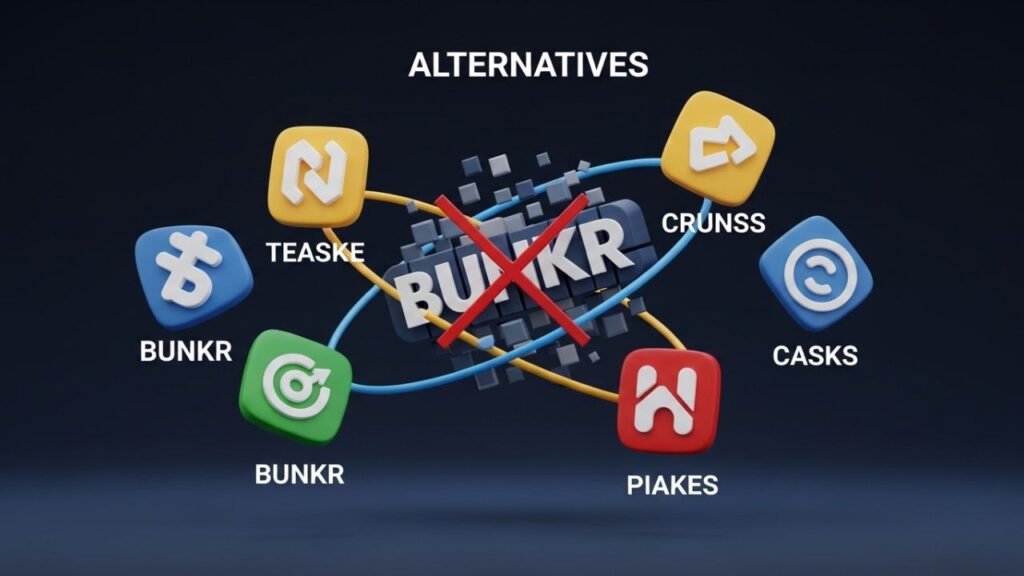Introduction
In today’s fast-moving digital world, finding reliable and flexible file hosting and collaboration tools is more important than ever. If you’ve been using Bunkr alternatives or are looking for one, it’s essential to evaluate both what your current tool offers and what you might be missing. This article dives deep into the concept of bunkr alternatives, why you might consider them, as well as what to look for as you evaluate options.
Why Consider Bunkr Alternatives?
Opting for bunkr alternatives makes sense for several reasons:
1. Evolving Needs
Your storage, sharing, or collaboration requirements may grow or change. What worked when you first signed up may no longer suffice. A bunkr alternative can provide more scalability or additional features.
2. Security & Compliance
If you’re working with sensitive data, privacy and regulatory compliance become paramount. Some platforms may offer stronger encryption, access controls or better audit logs compared to what you currently have.
3. Cost & Flexibility
Switching to a bunkr alternative may reduce your costs, give you more favourable licensing terms or free up limitations (such as storage size, user seats or upload limits).
4. Feature Gaps
Perhaps the platform you’re using lacks features like version control, collaboration workflows, integrations with other services, or mobile optimisation. A well-chosen bunkr alternative will fill those gaps.
What to Look for in Quality Bunkr Alternatives
When evaluating bunkr alternatives, keep these key criteria in mind:
• Security & Privacy
Look for platforms that provide encryption at rest and in transit, granular permission settings, user-authentication options (such as SSO or MFA), and transparent privacy policies.
• Storage & Sharing Flexibility
Does the solution support large file sizes, folder structures, anonymous sharing links, expiry options, or embed capabilities? A good bunkr alternative should offer flexible sharing without compromising security.
• Collaboration Features
Features like real-time editing, comment threads, version histories and activity logs make a difference when teams collaborate. If your current tool lacks these, consider a bunkr alternative that offers more.
• Integration Ecosystem
Seamless interoperability with other applications (like Google Workspace, Microsoft 365, Slack or APIs) ensures that switching to a bunkr alternative won’t lock you into a silo.
• Performance & Reliability
Look for high availability, fast upload/download speeds, easy UI, mobile support and robust customer support. A well-built bunkr alternative will deliver consistent performance.
• Cost-Effectiveness
Balance your budget with the features you need. Some bunkr alternatives may cost more upfront but provide far better ROI through productivity gains, fewer workarounds or enhanced security.
Top Bunkr Alternatives to Consider
Here are some strong bunkr alternatives worth exploring:
1. Secure File Hosting Platform
If your primary need is secure file hosting and link-based sharing, there are platforms that specialise in that niche, offering private links, password protection, and expiry options.
2. Full-Featured Collaboration Suites
If you need more than just file sharing—such as real-time collaboration, project workflows or version control—look into collaboration-centric platforms. These bunkr alternatives often combine storage with tools for teamwork, editing, and tracking.
3. Hybrid / Multi-Cloud Solutions
For organisations that require advanced flexibility—such as multi-cloud deployment, storage tiering, or data mobility—a bunkr alternative with enterprise-grade architecture may be appropriate.
How to Make the Switch to a Bunkr Alternative Smoothly
Transitioning to a new platform can be smoother if you follow these steps:
-
Audit your current usage: Identify what you use most (large uploads, sharing links, collaboration) and what pain-points you have.
-
Shortlist bunkr alternatives: Based on your criteria (security, cost, features) pick 2–3 options and trial them.
-
Test thoroughly: Upload typical files, test sharing links, invite collaborators, test mobile access and check integration.
-
Plan migration: Map out how existing files will move — batch uploads via API, preserving folder structures, maintaining links if possible.
-
Train users: Provide guidance so your team understands the new workflows; ease adoption matters.
-
Monitor performance: After switching, track user satisfaction, link reliability, upload/download speed and any support issues.
Potential Pitfalls of Choosing the Wrong Bunkr Alternative
Even when you choose a good solution, some traps await:
-
Over-paying for unused features: If you pick a high-end bunkr alternative but only need basic sharing, you’ll waste budget.
-
Migration complexity: Large libraries, nested folders or link dependencies may complicate moving from one system to another.
-
Missing integrations: If the new platform doesn’t integrate with your existing workflow (e.g., Slack, Teams, CRM), you’ll face friction.
-
Security or compliance mismatch: If the chosen bunkr alternative isn’t up to your industry’s regulatory standard (e.g., GDPR, HIPAA), you may introduce risk.
-
Poor user adoption: A tool that’s overly complex will hinder usage. Simplicity matters for teams.
Final Thoughts on Bunkr Alternatives
The search for the ideal bunkr alternative is really a search for the platform that best aligns with your evolving needs: security, sharing flexibility, collaboration and cost. Whether you require a basic but secure file-sharing solution or a full-blown collaborative ecosystem, carefully evaluating your options and planning the migration will pay dividends.
If you’d like specific names of platforms to evaluate (including pros/cons, pricing, and real-world feedback), I can provide an up-to-date list for you. Just let me know!





